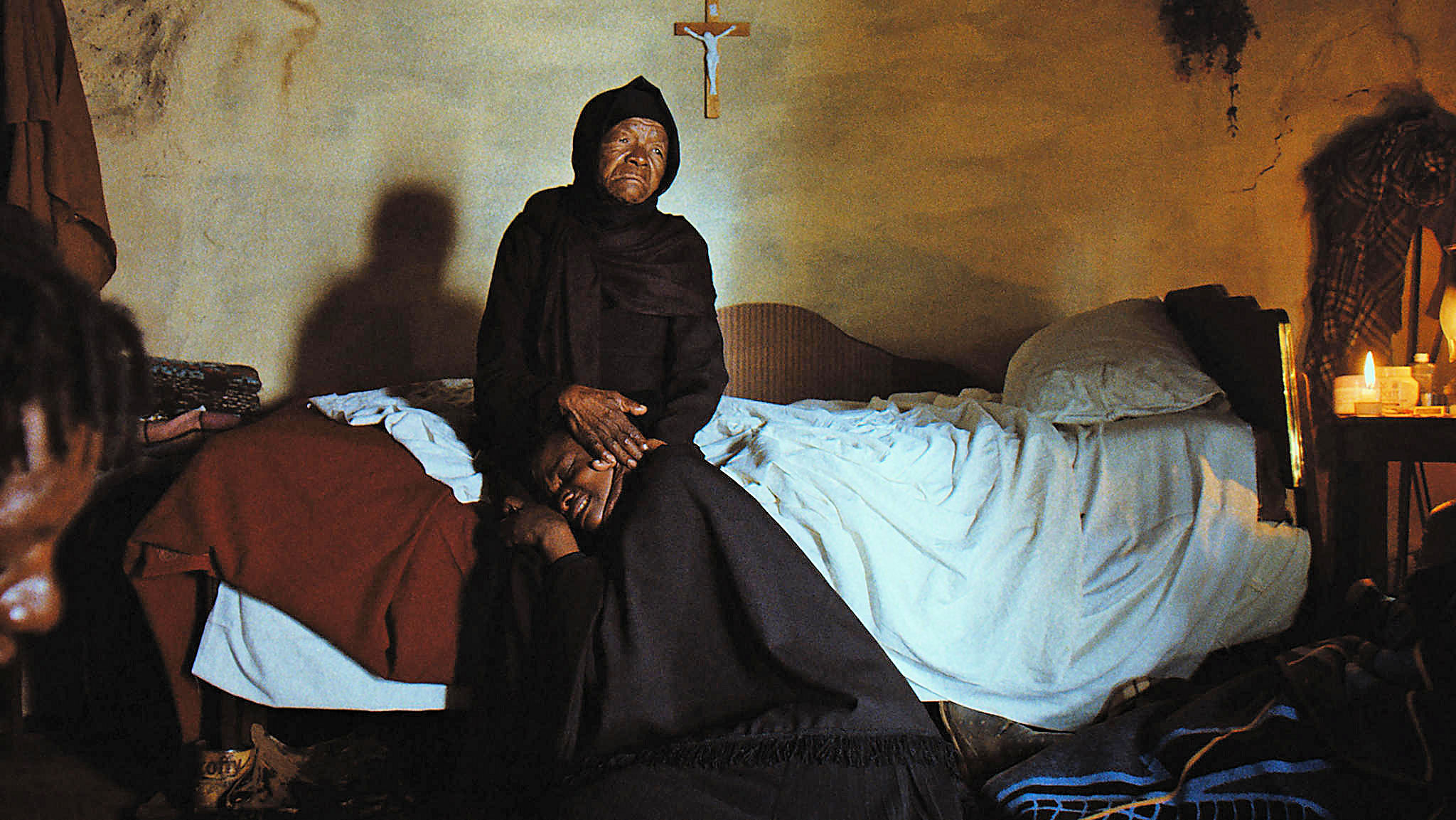The duration of filmed silences reflect the main character’s determination. For nearly two hours, Mantoa (Mary Twala Mhlongo), an 80-year-old widow, will literally absorb the viewer’s mind. Filmed most of the time in close-ups, This Is Not a Burial, It’s a Resurrection (2019) reveals, over the scenes, a small landlocked village in Lesotho, nestled among the mountains. This drama directed by Lemohang Jeremiah Mosese shows a widow struggling to make sense of her existence after the disappearance of her son, the last remaining member of the family. Apparently, he died in an accident at a mine in South Africa, where he worked; all the while he was expected home to celebrate Christmas. This is the start of a brutal psychological torture for Mantoa. The widow is draped in black and all her surroundings radiate anger and sadness. She no longer knows whom to blame: should she address her despair to God, the pastor, the villagers, the authorities or herself? In the shots presented by the director like postcards or canvas art, the octogenarian appears mostly silent, her gaze frozen. Close-ups follow, all of which allow the viewer to familiarize themselves with this wrinkled face, sad but endearing. The central character is often filmed in isolation even when part of a crowd – just one way for the director to describe the invisible wall of misunderstandings and complexities erected between Mantoa and the rest of the world.
The close-ups and wide shots reveal also the village’s marvelous landscapes, which the authorities unfortunately want to deprive the villagers from. This is another big fight for Mantoa – to prevent the construction of the dam which will raze the entire village in order to build a city instead. All her ancestors and relatives are buried there and she herself wants to be buried alongside her family. The performance of Mary Twala, South African actress, is masterful. We are dealing with an 80-year-old widow who carries her struggles with courage and dignity. Sometimes she stalks. But then she gets up, determined to work for the good of her community. She is also supportive of her neighbors; she cares about passing on history to young people. Mantoa speaks little and acts more. For a while, the village seems to come back to life. Although it is short lived. But this moment is cherished by the villagers, so the beautiful days have become rare. The fight against this cold monster that is the government is not won. But the widow will fight to the end.
While being fiction, the film bears verisimilitude to documentary as well: so real are the rendering and the feeling. The music which plays for a good part of the runtime is imbued with resistance. In the last scenes, it’s more songs of resignation. The length of the movie can be questioned. The post-production should have subtracted some sequences without interest; or the exaggerated presence of Mantoa in almost every scene.
Among the eight feature films viewed by the FIPRESCI jury at the 10th edition of the Luxor African Film Festival, This Is Not a Burial, It’s a Resurrection immediately fascinated everyone with the central character’s strength – a subject linked to African realities, but treated in such a way as to appeal to an international audience. Shot in the South Sotho language, it is the first Lesotho film to be nominated for an Oscar in the Best International Film category. The main actress, Mary Twala, who also starred in the movie Black is Queen, sadly passed away last year. This Is Not a Burial (which also received the Critics’ Award at the Hong Kong Film Festival) is positioned as her best movie.
Pélagie Ng’onana
© FIPRESCI 2021
Edited by Savina Petkova

